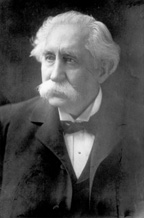
William Brimage Bate was a planter and slaveholder, Confederate officer, and politician in Tennessee. After the Reconstruction era, he served as the 23rd governor of Tennessee from 1883 to 1887. He was elected to the United States Senate from Tennessee, serving from 1887 until his death.

Felix Kirk Zollicoffer was an American newspaperman, slave owner, politician, and soldier. A three-term United States Congressman from Tennessee, an officer in the United States Army, and a Confederate brigadier general during the American Civil War; he led the first Confederate invasion of eastern Kentucky and was killed in action at the Battle of Mill Springs. Zollicoffer was the first Confederate general to die in the Western Theater.

Benjamin Franklin Cheatham was a Tennessee planter, California gold miner, and a general in the Confederate States Army during the American Civil War. He served in the Army of Tennessee, inflicting many casualties on Gen. Sherman at Kennesaw Mountain, Georgia, but took the blame for General Schofield's escape at Spring Hill, Tennessee – a major factor in the Confederate defeat at Franklin, Tennessee.
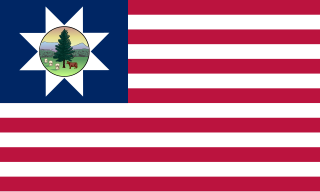
The 1st Vermont Infantry Regiment was a three months' infantry regiment in the Union Army during the American Civil War. It served in the eastern theater, in and around Fortress Monroe, Virginia.
The 6th Iowa Infantry Regiment was an infantry regiment that served in the Union Army during the American Civil War. The regiment was organized at Burlington, Iowa on July 17, 1861, and mustered out of service on July 21, 1865, in Louisville, Kentucky.

The 1st Arkansas Infantry (1861–1865) was a Confederate Army infantry regiment during the American Civil War. The regiment was raised in April 1861 by Colonel Thompson B. Flournoy. It moved first to Virginia, but transferred back to Tennessee and served the rest of the war in the western theater, seeing action in the Kentucky, Tennessee and Georgia campaigns. Following its depletion in numbers, the regiment was consolidated several times with other Arkansas regiments, finally merging in 1865 into the 1st Arkansas Consolidated Infantry Regiment. There were three regiments known as "1st Arkansas" during the war. The second unit with the designation of "1st Arkansas" was the 1st Infantry, Arkansas State Troops, which was mustered into Confederate service at Pitman's Ferry, Arkansas, on 23 July 1861, under the command of Colonel Patrick Cleburne; this unit was eventually redesignated as the 15th Arkansas Volunteer Infantry. The third unit bearing the title "1st Arkansas" was the 1st Arkansas Volunteer Infantry, which served with the Union Army.
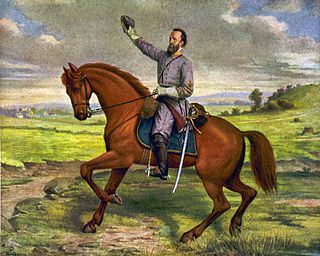
Stonewall Jackson’s military career consists of a combination of various brevet, temporary, and permanent appointments in no less than five different military organizations.

The general officers of the Confederate States Army (CSA) were the senior military leaders of the Confederate States of America during the American Civil War of 1861–1865. They were often former officers from the United States Army before the Civil War, while others were given the rank based on merit or when necessity demanded. Most Confederate generals needed confirmation from the Confederate States Congress, much like prospective generals in the modern U.S. armed forces.
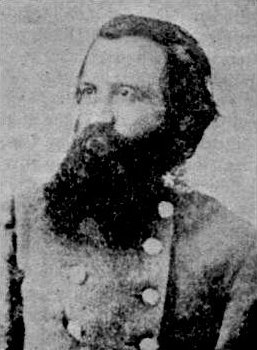
James Argyle Smith was a United States Army officer, and a graduate of West Point. He is known for being a Confederate brigadier general during the Civil War, his works in the educational system in Mississippi, and in the Bureau of Indian Affairs.
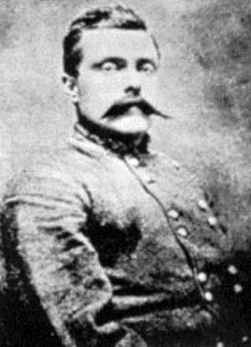
Robert Charles Tyler was a Confederate Brigadier General during the American Civil War. He was the last general killed in the conflict.
The 17th New York Veteran Infantry Regiment was an infantry regiment that served in the United States Army during the American Civil War. It was often referred to as the 17th New York Veteran Zouaves and has been erroneously reported as using mules as mounts during Sherman's March to the Sea up until the Grand Review of the Armies. The regiment wore the Hawkins Zouave pattern uniform, which was first used by the 9th New York Volunteer Infantry, Hawkins Zouaves, and later was adopted by several other regiments including the 164th New York, 35th New Jersey and others.
United States Volunteers also known as U.S. Volunteers, U.S. Volunteer Army, or other variations of these, were military volunteers called upon during wartime to assist the United States Army but who were separate from both the Regular Army and the militia.
The 5th Regiment, Arkansas State Troops (1861) was an Arkansas State infantry regiment that served during the American Civil War. Formed in mid-1861, the regiment was assigned to the command of Brigadier General Nicholas Bartlett Pearce, commander, 1st Division, Provisional Army of Arkansas. It was disbanded after the Battle of Wilson's Creek in August 1861. Another Arkansas unit also had the designation 5th Arkansas, the 5th Arkansas Infantry Regiment which belonged to the Confederate Army of Tennessee. There is no connection between the two units.
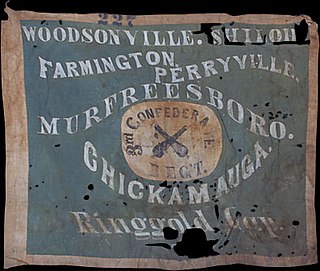
The 18th Arkansas Infantry (Marmaduke's) (1861–1865) was a Confederate Army infantry regiment during the American Civil War. The unit was also briefly identified as the 1st Arkansas Infantry Battalion. The unit was most often referred to as the 3rd Confederate Infantry Regiment. The designation "Confederate Infantry Regiment" was intended to convey the difference between Provisional Confederate Army units and Regular Confederate Army Units, with Provisional units being those regiments who received a state designation such as "XX Arkansas Infantry Regiment". In practice, the designation was most often utilized when Regiments were assembled utilizing companies from more than one Confederate state. The "3rd Confederate Infantry Regiment" is occasionally misidentified as the 3rd Arkansas Infantry Regiment commanded by Colonel Van H. Manning.
The 154th Regiment, Tennessee Infantry was an infantry regiment from Tennessee that served with the Confederate States Army in the American Civil War. Raised originally in 1842 as the 154th Tennessee Militia it sought to retain its number and was as such also known as 154th (Senior) Tennessee Infantry . Consolidating with the 13th Tennessee Infantry Regiment in March 1863 it was known as 13th-154th Tennessee Infantry Regiment; and had a number of temporary field consolidations until it was finally merged into the 2nd Consolidated Tennessee Infantry on April 9, 1865. The regiment surrendered with the remnants of the Army of Tennessee at Bennett Place on April 26, 1865.
The Adjutant General of Maryland is the head military official of the Maryland National Guard, the Maryland Defense Force, and any other military or paramilitary units that may be maintained by the State of Maryland. The adjutant general is responsible for the military department's budget and maintains all State-owned armories in Maryland.
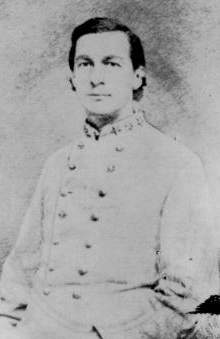
Alexander William Campbell, was a Confederate States Army brigadier general during the American Civil War. He was a lawyer in Tennessee before and after the war, mayor of Jackson, Tennessee, 1856, and an unsuccessful candidate for the Democratic Party nomination for governor of Tennessee in 1880.
William Henry Harman was a brigadier general in the Virginia militia and colonel in the Confederate States Army during the American Civil War, who was killed in action during the Battle of Waynesboro, Virginia, on March 2, 1865.
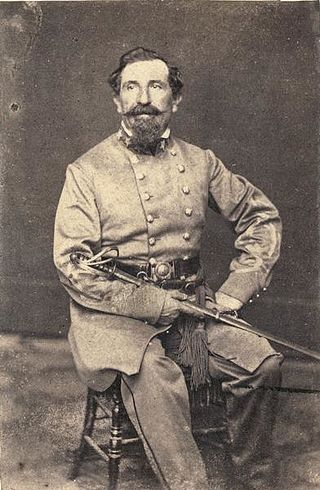
Adolphus Heiman was a Prussian-born American architect and soldier; later becoming a Confederate officer during the American Civil War.
The 75th Regiment Pennsylvania Volunteer Infantry was a unit of the Union Army during the American Civil War. It was composed almost entirely of German-speaking residents of Philadelphia and newly arrived German immigrants. Total enrollment, over the course of the war, was 1,293 officers and men. The 75th Pennsylvania participated in several major battles including Second Bull Run, Chancellorsville, and Gettysburg. The regiment was transferred to the Western Theater in September, 1863. There, it participated in operations in Tennessee, before it was mustered out of service on September 1, 1865, following the close of the war.











